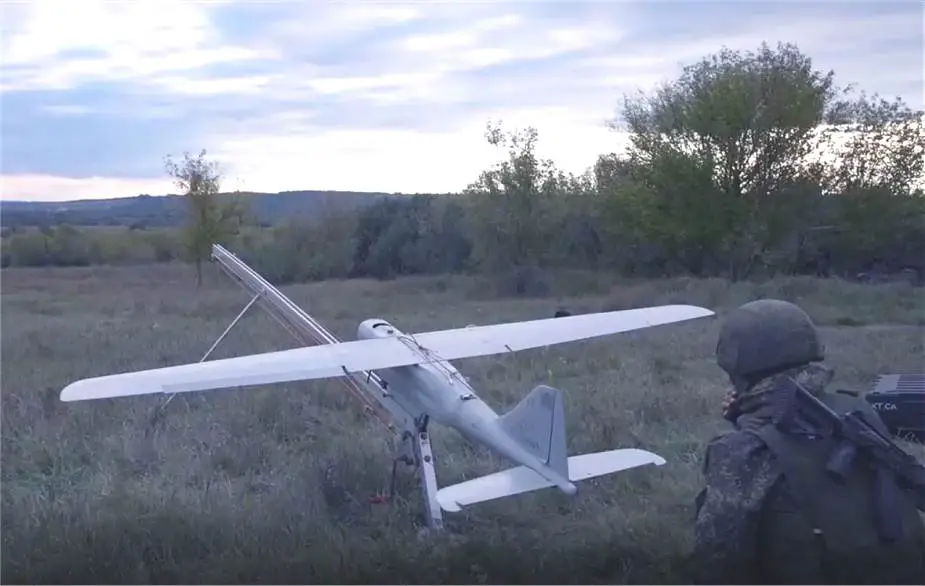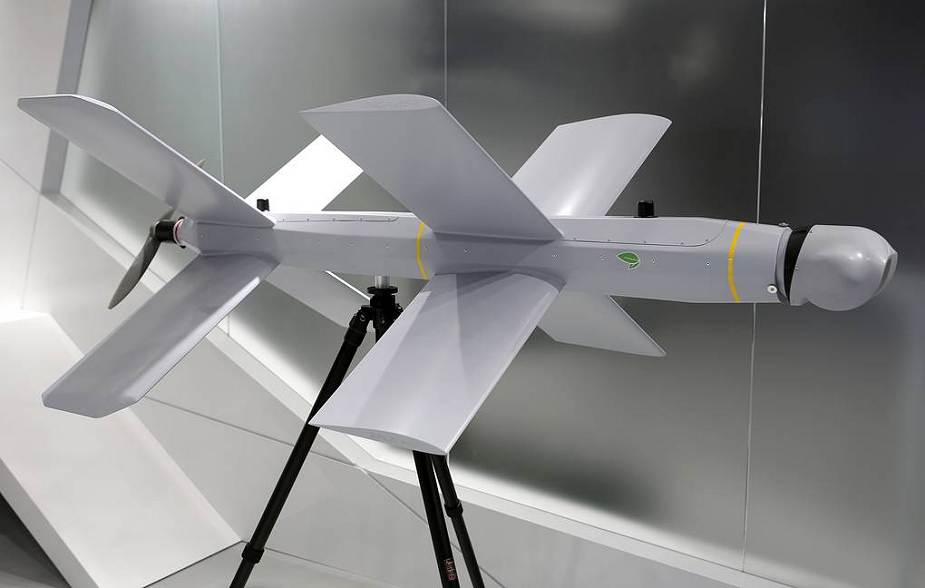- Army
- Conflicts in the world
- Israel - Iran conflict 2025
- Pakistan - India Conflict 2025
- Russia Ukraine War 2022
- Libya conflict day by day
- HAMAS - Israel War 2023
- Operation Serval in Mali French Army
- Sangaris operation Central African Republic
- Sangaris opération militaire République Centreafrique
- Ukraine - Russia conflict
- Syria conflict news
- Defence & Security Industry Technology
- Armies in the world
- Analysis Defense and Security Industry
- Conflicts in the world
- Navy
- Air
Analysis: Soldiers of Russian army will extend the use of suicide drones in Ukraine
Russian troops have started to actively use kamikaze drones to conduct military operations in Ukraine and to strike Ukrainian army positions and combat vehicles. The Russian soldiers have changed their attitude towards this type of ammunition due to their advantages, said Denis Fedutinov, an expert in unmanned aerial systems.
Follow Army Recognition on Google News at this link

Russian soldiers use several types of drones to conduct reconnaissance and combat missions in Ukraine. (Picture source Russian MoD)
Last month, the Russian Defense Ministry posted several video clips showing the destruction of Ukrainian military hardware by kamikaze drones capable of attacking an armored target with a direct hit. The video footage demonstrates the combat employment of Lancet loitering munitions against Ukrainian army armored vehicles and weapon systems, including those supplied by NATO countries.
On October 20, Russia’s Rostec state hi-tech corporation posted a video showing a KUB kamikaze drone hitting distant ground targets of the enemy. Earlier, Rostec reported on the successful use of both drones in the operation. According to President of the Kalashnikov Group Alan Lushnikov, the Russian Armed Forces have started “to actively use” drones from the ZALA Aero Company (part of the Kalashnikov Group).
It was reported on October 14 that the US Army command had addressed defense companies in search of ideas on how to protect against attacks from kamikaze drones. According to US Defense News Weekly, during military special operations, both sides of the conflict have already used thousands of such munitions.
According to Fedutinov, in recent weeks, Russian army units involved in the conflict in Ukraine have increased the intensity and effectiveness of using loitering munitions, hitting both the enemy’s critical infrastructure facilities and separate military facilities, including radar station antennas, artillery and rocket launchers, armored vehicles, ammunition depots, etc.
“We can say that there has been a certain kind of turning point in the attitude of the Russian military to this sort of weapon, and now we, although a bit late, are starting to catch up, using the positive properties inherent in these systems,” the expert said, noting that previously it was considered more optimal to combine unmanned reconnaissance and ground strike assets.

The Russian company Kalashnikov has developed the Lancet loitering munition also called a suicide drone. (Picture source TASS)
The practice has shown that in a number of cases the use of loitering munitions is justified, the expert said. According to Fedutinov, strike drones minimize the time from target detection to target engagement. Thus, the use of such drones generally increases the effectiveness of combat operations.
“Modern warfare is very dynamic, artillery and other strike weapons often change their positions, and the relevance of intelligence information in such a situation is extremely short,” the expert explained. “It is difficult to overestimate the value of being able to quickly track a target and hit it.”
Fedutinov also noted the possibility of using another drone to assess battle damage inflicted by strike UAVs, which has been repeatedly demonstrated by loitering munitions similar to Lancet.
The Lancet drone produced by the ZALA Aero Company (part of the Kalashnikov Group within Russia’s Rostec state hi-tech corporation) has several guidance systems: coordinate, optical-electronic, and combined. It has a television communication channel to transmit the images of targets, which makes it possible to confirm their destruction. The drone has a radius of 40 km (25 mi). Its maximum takeoff weight is 12 kg.
The KUB drone has been developed by Russia’s ZALA Aero Company. The drone carries a 3 kg payload, has a flight endurance of 30 minutes, and a maximum speed of 130 km/h (80.8 mph). The KUB loitering munition successfully passed state tests in November 2021. Its serial supplies to the Russian Armed Forces were scheduled for 2022.


























